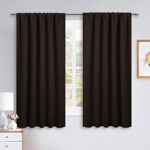How to Save Energy at Home – 101 Great Home Energy Saving Tips
Making your home more energy efficient will help you to reduce high energy bills, improve comfort and help to protect the environment.
Saving energy at home is easy. This book contains time-tested tips and energy-saving choices for reducing your home energy consumption:
The book covers the following areas:
* Cutting Heating and Cooling Costs
* Energy Efficient Use of Appliances.
* Saving Energy in the Kitchen
* Energy Efficient Home Lighting
* Energy Efficient Water Use
Here’s just a small sample of the tips included:
Turn the thermostat to its lowest setting if you won’t be at home for a few days. You can turn off the heating system completely if there’s no danger of pipes freezing while you’re away.
Walk around the house with a candle on a cold windy day to see where cold may be entering around doors and windows.
Save on heating costs and stay comfortable in cold weather by dressing to retain body heat.
Layer your clothing: wear lightweight basic garments, such as a shirt or blouse or short-sleeved sweater, covered by heavier garments, such as a Saving Energy sweater vest, and topped with a warm jacket or sweater jacket. If you become too warm you can adjust your own body thermostat by taking off a layer.
To speed the installation of weatherstripping, try stapling instead of nailing it.
Keeping your home well caulked is one of the best ways to save energy. When you caulk, make sure joints are thoroughly dry-you can dry deep crevices with a cloth stretched over the blade of a putty knife, or with a blast of hot air from a hair dryer.
When caulking several joints, start with the smallest joint and recut the tube’s nozzle as necessary for successively larger joints.
A room will stay warmer in cold weather if curtains fit tightly against the window’s frame so that warm room air doesn’t move across the cold.
window surface. A fixed valance at the top and sides of the curtains will help, and so will weighting or fastening the curtains at the bottom.
Installing a window greenhouse in one or more of your house’s south-facing windows is an unusual (and effective) way to gain extra heat for your home in winter, to reduce the loss of heat to the outdoors in the evening, and, of course, to provide an encouraging environment for plants.
Such greenhouses can fill even east or west windows if you install reflectors to catch more of the sun’s rays.
If you plan to install new shades or blinds to help keep your home warm, consider mounting them outside the frames. If they’re installed inside window frames air can leak along the edges, but outside mountings help reduce the flow of air against cold window glass.
Solar reflective films applied over your windows in warm-weather months will reduce the amount of light and, therefore, of heat that enters your home.
A sim pIe strategy like keeping yourwindows sparkling clean in winter can help warm your home. Spotless window glass lets in more sunlight than grimy panes.
To maintain your home’s temperature, latch the windows-instead of merely closing them for a tighter seal.
It’s best to remove window screens before winter arrives because fine-mesh screen can reduce by up t020 percent the amount of warming sunlight entering your home.
During winter months, cooking foods slowly in the oven at low temperatures will provide extra heat to help warm the house.
Hot bath water will help keep your bathroom warm in cold weather months if you leave it to cool before draining the tub. The water will also add humidity to contribute to the comfort of your home.
Aluminum foil placed behind a radiator helps to reflect heat into the room. Tape a piece of foil to the wall directly behind the radiator, shiny side out; use duct tape all around the edges.













